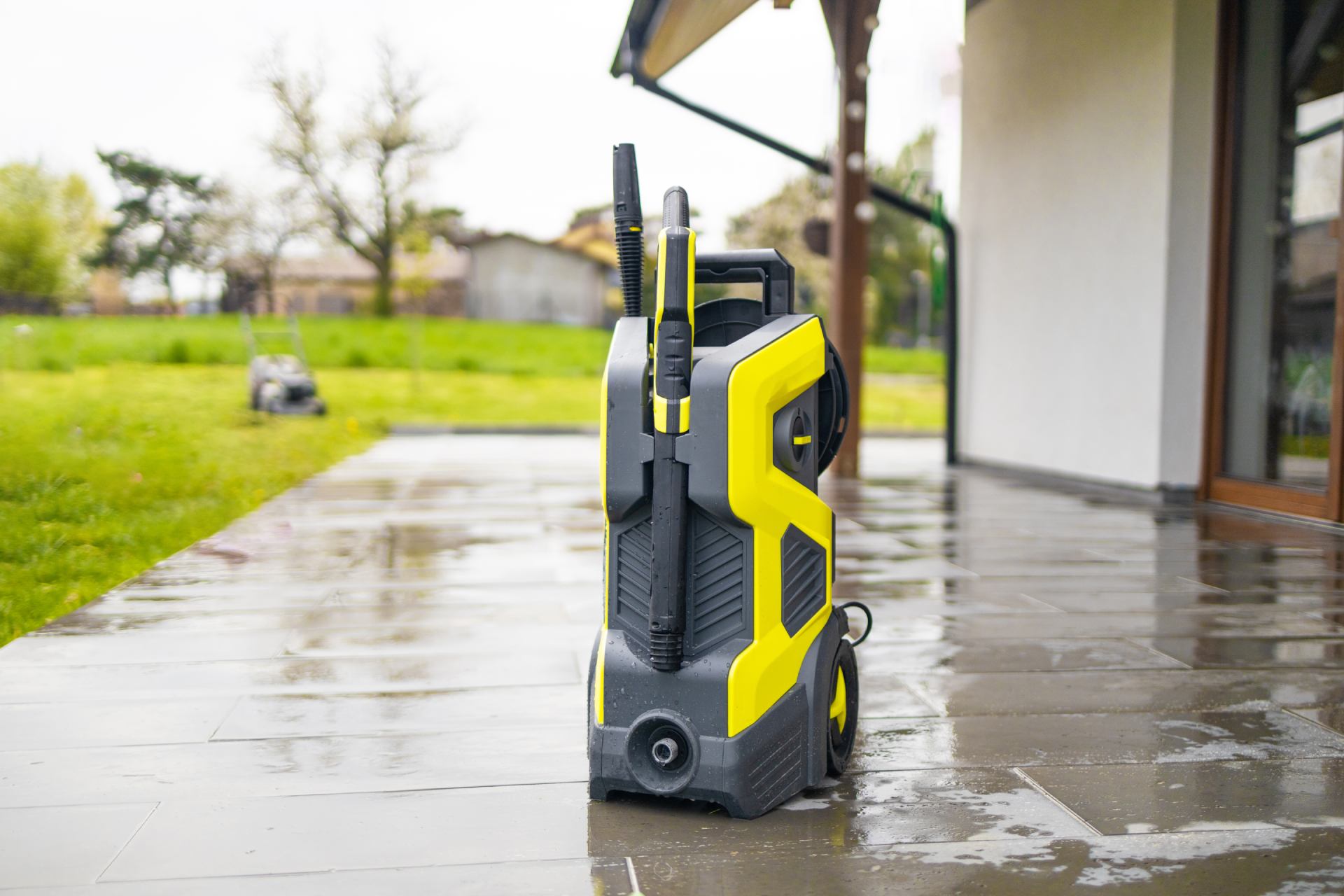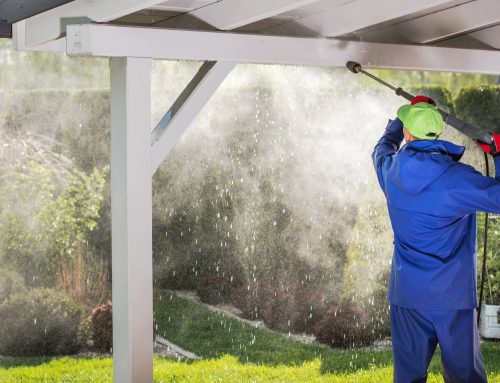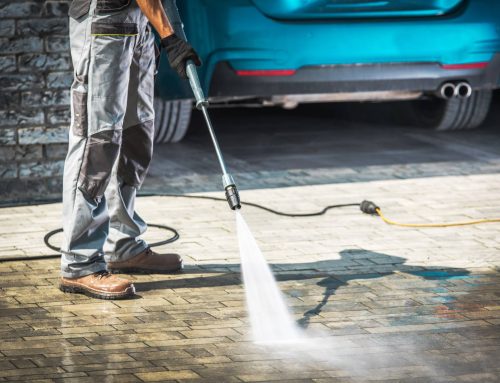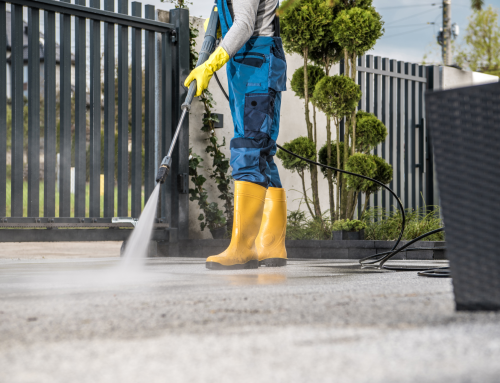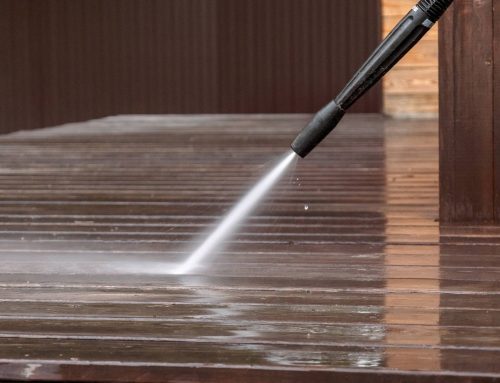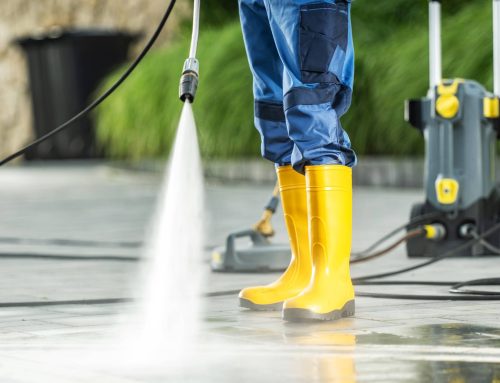Are you considering a power wash for your concrete properties? Whether you’re wielding the wand or entrusting the task to a pro, there are essential pointers to remember. Understanding the best practices for power washing concrete is like handing your property a spa day. Let’s delve into these practices that promise a pristine outcome.
Why Concrete Might Need Special Attention During Power Washing:
One characteristic of concrete that needs special attention is its porous surface. Now, if you turn up the pressure too much, water can force its way into these pores. High pressure can potentially cause cracks and an angry owner.
Furthermore, as concrete gets older, it becomes more porous and brittle. It’s been through some wear and tear, making it more sensitive to the power of high-pressure water. Any tiny cracks or weak areas that have appeared could get worse when hit by the strong spray of a power washer. The intense water pressure could slip into these small spaces, possibly making cracks bigger or even breaking off small pieces.
Now, when you’re dealing with stamped or decorative concrete, things get even trickier with their intricate designs and textures. It’s like handling a delicate work of art. Too much power washing pressure and those cool designs might vanish, or the carefully crafted patterns could get damaged.
Remember these because overlooking them might turn your power washing plan into a mishap!
Best Power Washing Practices:
-
Inspect the Surface
Before you jump into the power washing process, take a moment to examine your concrete surface closely. Pay careful attention to any indications of trouble, such as cracks, chips, or fragile areas. These seemingly innocuous issues could actually be weak points in the concrete structure.
Now, why is this level of scrutiny so vital? Well, consider what happens when you direct a super powerful water stream at a crack – it’s similar to constantly picking at a scab. Instead of healing, you might end up worsening the underlying issue.
In power washing, understanding and identifying these weak spots in advance allows you to chart a strategic course of action. It’s like comprehending the lay of the land before setting off on a journey – it equips you with insights to navigate adeptly and circumvent potential obstacles.
-
Clear the Area
Think of this step as the preparation phase before power washing. Just as actors prepare the stage for a performance, you should prepare the area by removing any objects, furniture, or miscellaneous items from around the concrete surface. This step is like creating a blank canvas, much like tidying your bed before you sleep.
The significance of having an uncluttered space lies in its facilitation of a thorough power wash. An unobstructed environment ensures that the cleaning process can be executed precisely and without the risk of inadvertently soaking or damaging objects. It’s like setting the table for an elegant dinner. What you want is an organized and inviting environment to facilitate an optimal experience.
-
Wet the Surface
Envision your concrete surface as a thirsty plant yearning for a drink before being nourished with fertilizer. Similarly, before you introduce the cleaning solution, it’s wise to give your concrete a gentle soaking. This step involves wetting the surface with water.
But why is this preliminary hydration necessary? Think of it as priming a canvas before painting; it ensures an even distribution of the subsequent cleaning solution. Without this preliminary step, a dry surface might rapidly absorb the cleaning solution, leading to uneven coverage. In essence, this step serves as a subtle preparation, ensuring that the surface is adequately primed to receive and interact effectively with the cleaning solution.
-
Even Coverage
As you move into the phase of applying the cleaning solution, envision the process as analogous to skillfully icing a cake. The objective here is to ensure a consistent layer of the solution across the entire expanse of the concrete surface. Failing to cover all areas is akin to leaving gaps in the icing on a cake – a visual flaw that’s far from ideal.
In situations where certain sections of the concrete prove more resistant to cleaning, it’s perfectly acceptable to enlist some assistance, perhaps in the form of a brush or broom. However, it’s important to remember that the goal is not to scrub forcefully as if trying to erase a stubborn stain. Instead, imagine this stage as a gentle sweep, intended to facilitate the even distribution of the solution without causing any unintended damage.
-
Test Spray
Consider this step as a necessary measure. It’s like dipping your toe into the water before fully diving in. Picture yourself assessing the temperature of a bath before taking the plunge. Much like sampling a small morsel before indulging in a full meal, this step involves beginning your power-washing endeavour with the lowest pressure setting and a broader spray pattern.
These analogies are many because it’s a crucial step often missed. It’s vital to ensure the pressure is just right for the task at hand. To carry this out effectively, pinpoint a discreet and inconspicuous area to conduct this preliminary test. Think of this trial run as a sneak preview, assuring that the water pressure won’t unexpectedly wreak havoc on the surface.
-
Consistent Motion
Imagine you’re painting a wall with a roller. The desire is for the colour to maintain a uniform consistency throughout, right? This same principle applies to power washing.
When you’re in the process of spraying, it’s crucial to keep the nozzle in constant motion at a steady pace. If you linger in one spot excessively, it’s akin to holding a brush stationary in one place while painting a wall – the result may be uneven colour or, in this context, inconsistent cleaning.
To ensure a seamless and uniform cleaning outcome, think of yourself as a conductor orchestrating the nozzle’s movement in a fluid rhythm. This conductor-like role guarantees a thorough, consistent clean, devoid of any irregular lines or streaks.
-
Post-Cleaning Inspection
Once the power washing spectacle has concluded and the surface has been given enough time to dry, it’s time to don your detective hat.
Envision yourself examining your freshly washed car after a thorough clean – the objective is to verify that every corner is gleaming and in optimal condition. Likewise, extend the same level of scrutiny to your concrete surface. Assess its cleanliness and be vigilant for any lingering dirt or spots that may have eluded the power wash.
Try to check for any unintended damages that might have been caused by the power washing process. This step of the process is reminiscent of the final review before submitting an important assignment – a meticulous check to ensure that everything is unequivocally sound.
This is the time when you can nod in satisfaction and affirm, “Yes, job well done.” Only when you’re assured that everything is in its rightful place – clean and undamaged – can you deem your power washing mission accomplished.
Power Washing: Doing It Right!
Power washing concrete surfaces might seem straightforward, but it’s a task that demands attention to detail. Remember that concrete has its quirks, from its porous nature to its sensitivity as it ages. These factors should guide your approach to ensure a successful and damage-free power washing experience.
By following these best practices, you can ensure a successful power washing mission that leaves your concrete clean and undamaged, ready to shine for years to come. So, go and embrace the power of power washing, and let your concrete surfaces revel in their renewed glory!

